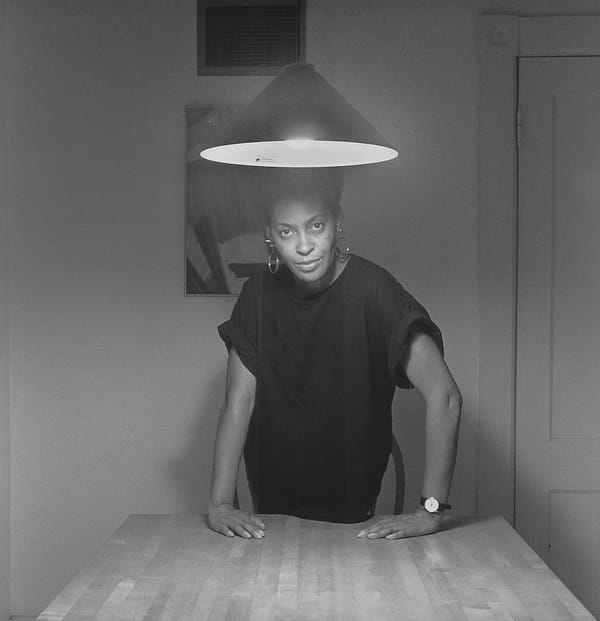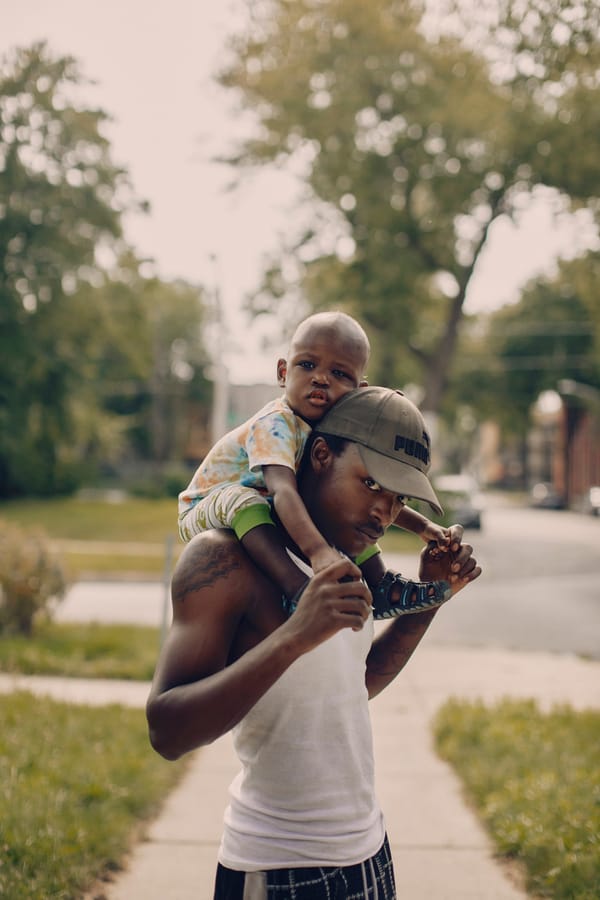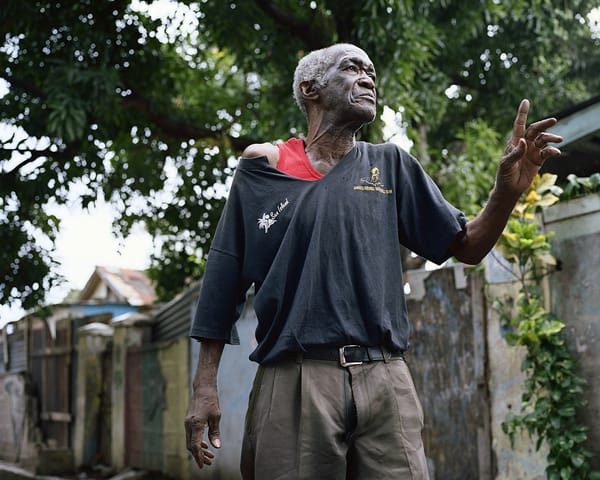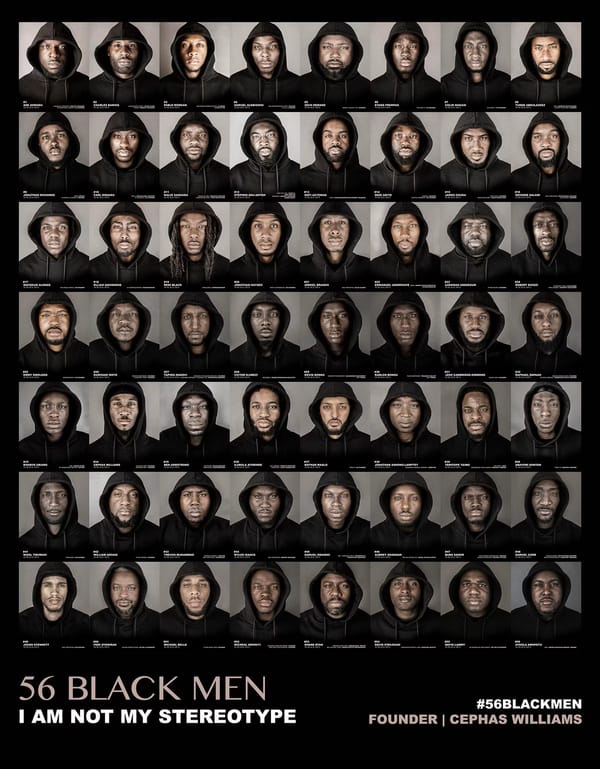What Zun Lee saw
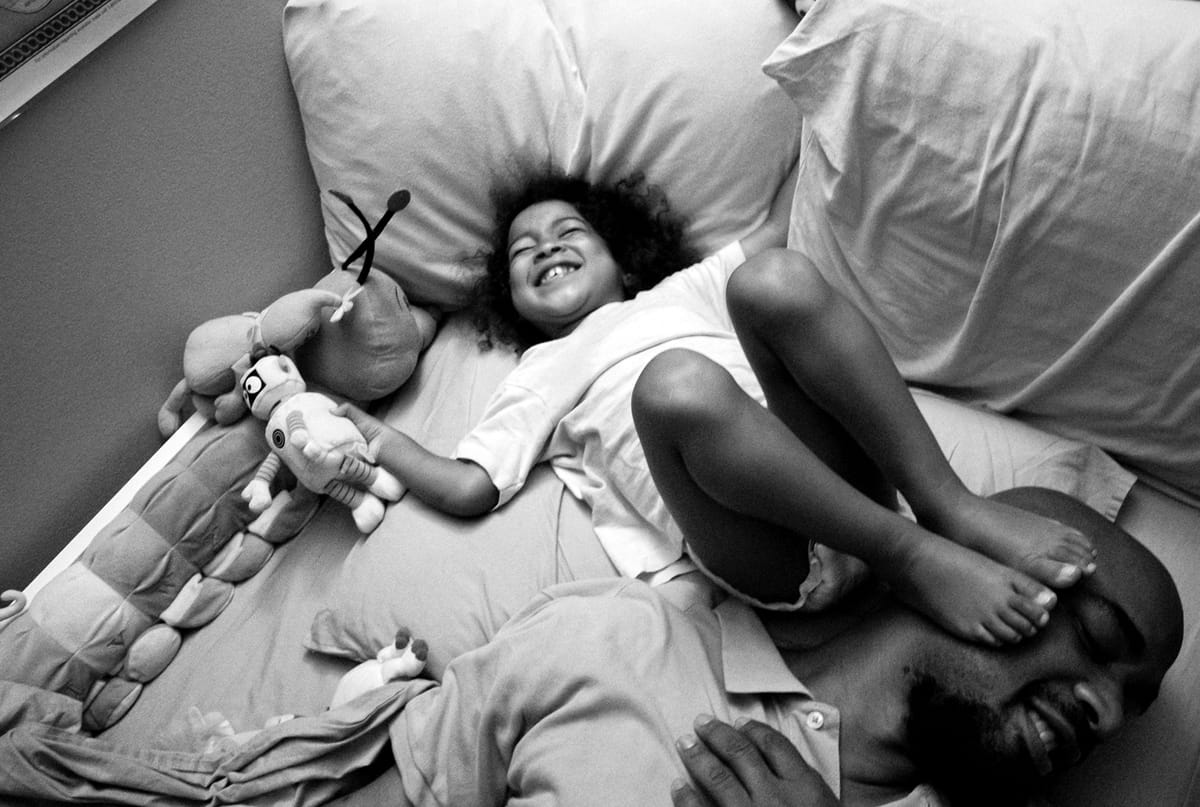
Look closely at this photograph. Let your eyes stay with it, and ask yourself, "What am I really seeing?"
Laughter ripples through a quiet room. A little girl, Esmeralda, sprawls across the bed, limbs loose, face alight with unfiltered joy. Her foot presses gently against her father’s cheek, a playful nudge in the middle of their shared chaos. Billy Garcia, her father, smiles through it, eyes closed, fully here.
The moment is unscripted. Toys are scattered, sheets left in soft disorder, but everything in this frame is held with care. It is not a scene created for the camera. It is a moment lived. This is Black fatherhood, not as imagined by the media but as it really is: playful, tender, ordinary.
Zun Lee did not set out to make Father Figure. The project found him while he was still uncovering his own story. At 25, Lee discovered his Black heritage, a seismic shift that redefined how he saw himself and the world. As he began to reconcile the absence of a biological father with the abundance of care he had received from Black men throughout his life, a need emerged. He wanted to show the kind of masculinity he knew from experience. Gentle. Vulnerable. Present.
That gaze is everything.
The Black gaze in Lee’s work is not looking at. It is looking with. It is shaped by memory, not myth, and rooted in relationships rather than assumptions. As he began to move beyond street photography, Lee was encouraged to get closer, to stay longer, to tell stories that reflected the fullness of Black life. This photograph is one result of that shift.
Billy and Esmeralda are not performing. They are not correcting a narrative, nor resisting one. They are simply being. And being, in this context, becomes powerful. Because in most American media, tender and loving Black fathers cease to exist. They are either absent or made exceptional. Lee knew something else to be true. He had lived it.
“For me it was important to say that it was not just about Black men being fathers,but it was also about embodying a different type of masculinity.” — Zun Lee
That difference is visible here. Not in grand gestures, but in a father's willingness to be physically close, emotionally open, unguarded. It is visible in the intimacy of play, in the blur between protector and playmate, in a daughter’s joy without fear.
These photographs were not made for outsiders. They are not acts of persuasion. Lee made them, as he put it, “just for us.” They reflect a reality rarely shown: not only that Black men love their children, but that their love can be silly, soft and unshakeable. That they embody care in ways that confound the dominant frame.
What makes these images so moving is not just what they show, but how they were made. One family embraced Lee as more than a photographer. They made him godfather to their child. This trust reshaped the work, allowing moments like this one to exist without self-consciousness. The image carries that trust. It does not impose. It witnesses.
Zun Lee saw more than a father and daughter playing. He saw himself. And in seeing himself, he saw a community. A community that has always been there, loving each other fiercely, even when no one was watching.
This photograph is not a statement. It is a memory, returned to us with care. A moment that tells us we have always been enough.
Share on social
If this sparked something in you, share it. Our voices are powerful, and when we lift each other up, we all see a little clearer.
Contribute
At theBLKGZE, we don’t just reflect the world, we reshape it. We’re building an archive that centres Black vision and truth. We reclaim the frame. We archive what’s been silenced. We honour the everyday and the extraordinary in Black life.
We’re calling on Black photographers to contribute. Add your voice to the archive. Let's reshape the narrative with a truer picture of who we are and who we’ve always been.


